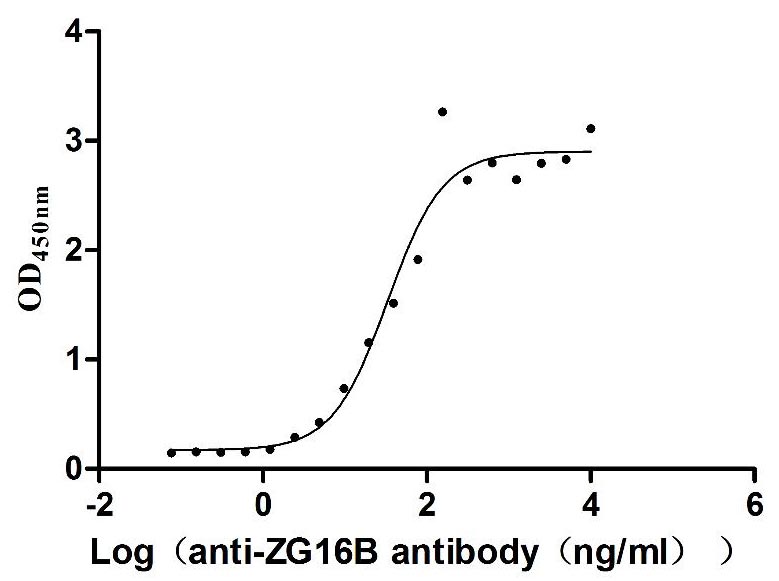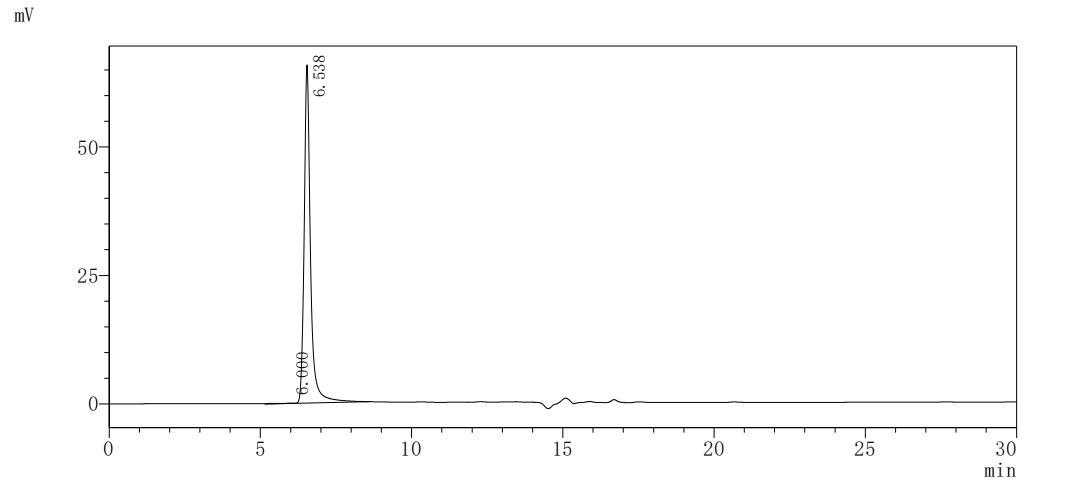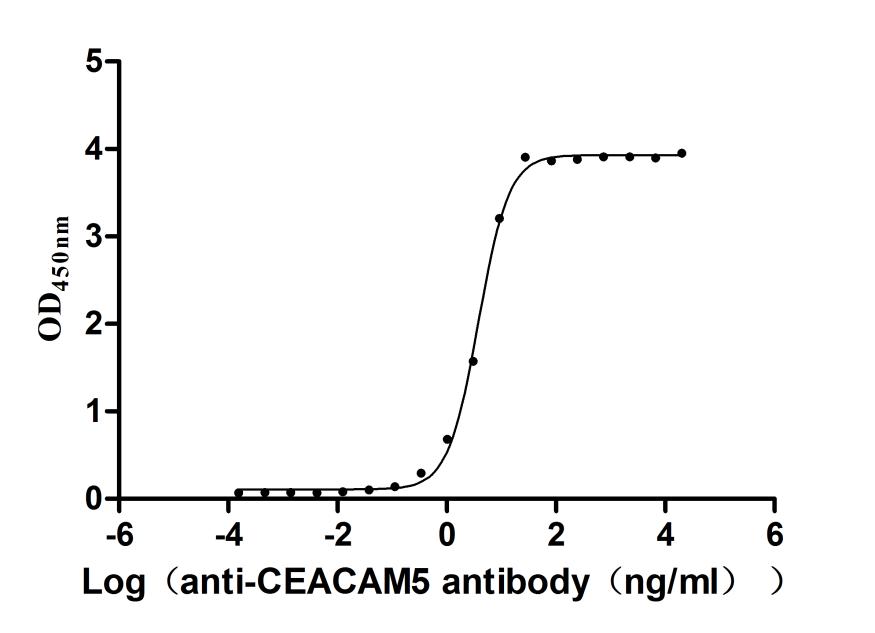Recombinant Human Cryptochrome-1 (CRY1)
In Stock-
中文名称:Recombinant Human Cryptochrome-1(CRY1)
-
货号:CSB-EP621957HU
-
规格:¥1836
-
图片:
-
其他:
产品详情
-
纯度:Greater than 85% as determined by SDS-PAGE.
-
基因名:CRY1
-
Uniprot No.:
-
别名:Cry1; CRY1_HUMAN; Cryptochrome 1 (photolyase like); Cryptochrome 1; Cryptochrome-1; PHLL1; Photolyase 1; Photolyase-like
-
种属:Homo sapiens (Human)
-
蛋白长度:Full Length
-
来源:E.coli
-
分子量:73.8 kDa
-
表达区域:1-586aa
-
氨基酸序列MGVNAVHWFRKGLRLHDNPALKECIQGADTIRCVYILDPWFAGSSNVGINRWRFLLQCLEDLDANLRKLNSRLFVIRGQPADVFPRLFKEWNITKLSIEYDSEPFGKERDAAIKKLATEAGVEVIVRISHTLYDLDKIIELNGGQPPLTYKRFQTLISKMEPLEIPVETITSEVIEKCTTPLSDDHDEKYGVPSLEELGFDTDGLSSAVWPGGETEALTRLERHLERKAWVANFERPRMNANSLLASPTGLSPYLRFGCLSCRLFYFKLTDLYKKVKKNSSPPLSLYGQLLWREFFYTAATNNPRFDKMEGNPICVQIPWDKNPEALAKWAEGRTGFPWIDAIMTQLRQEGWIHHLARHAVACFLTRGDLWISWEEGMKVFEELLLDADWSINAGSWMWLSCSSFFQQFFHCYCPVGFGRRTDPNGDYIRRYLPVLRGFPAKYIYDPWNAPEGIQKVAKCLIGVNYPKPMVNHAEASRLNIERMKQIYQQLSRYRGLGLLASVPSNPNGNGGFMGYSAENIPGCSSSGSCSQGSGILHYAHGDSQQTHLLKQGRSSMGTGLSGGKRPSQEEDTQSIGPKVQRQSTN
Note: The complete sequence including tag sequence, target protein sequence and linker sequence could be provided upon request. -
蛋白标签:N-terminal 10xHis-tagged and C-terminal Myc-tagged
-
产品提供形式:Liquid or Lyophilized powder
Note: We will preferentially ship the format that we have in stock, however, if you have any special requirement for the format, please remark your requirement when placing the order, we will prepare according to your demand. -
缓冲液:Tris-based buffer,50% glycerol
-
储存条件:Store at -20°C/-80°C upon receipt, aliquoting is necessary for mutiple use. Avoid repeated freeze-thaw cycles.
-
保质期:The shelf life is related to many factors, storage state, buffer ingredients, storage temperature and the stability of the protein itself.
Generally, the shelf life of liquid form is 6 months at -20°C/-80°C. The shelf life of lyophilized form is 12 months at -20°C/-80°C. -
货期:3-7 business days
-
注意事项:Repeated freezing and thawing is not recommended. Store working aliquots at 4°C for up to one week.
-
Datasheet & COA:Please contact us to get it.
相关产品
靶点详情
-
功能:Transcriptional repressor which forms a core component of the circadian clock. The circadian clock, an internal time-keeping system, regulates various physiological processes through the generation of approximately 24 hour circadian rhythms in gene expression, which are translated into rhythms in metabolism and behavior. It is derived from the Latin roots 'circa' (about) and 'diem' (day) and acts as an important regulator of a wide array of physiological functions including metabolism, sleep, body temperature, blood pressure, endocrine, immune, ...显示更多
-
基因功能参考文献:
- CRY-1 was expressed in 94% of the CLL patients at diagnosis. The median CRY-1 relative gene expression level (0.006) stratified patients into high and low expression groups. Forty of 100 (40%) CLL patients showed high CRY-1, 54/100 (54%) showed low CRY-1, and 6/100 (6%) had undetectable CRY-1 gene expression. PMID: 28884705
- Independent silencing of CRY1 and CRY2 genes in HAC15 cells resulted in a mild upregulation of HSD3B2 without affecting HSD3B1 expression. In conclusion, our results support the hypothesis that CRY1 and CRY2, being AngII-regulated genes, and showing a differential expression in APAs when compared with the adjacent adrenal cortex, might be involved in adrenal cell function, and in the regulation of aldosterone production PMID: 29874863
- The studies in this review reported contrasting results about the association of different single nucleotide polymorphisms (SNPs) in clock genes and Major Depressive Disorder. The most consistent result reported the association between SNP rs2287161 of CRY1 and MDD development. PMID: 29128257
- CRY1/2 serve as corepressors for many NRs. PMID: 28751364
- Study confirms the prognostic role of CRY1 in chronic lymphocytic leukemia, as its aberrant methylation and expression is associated with high risk of treatment initiation and survival. PMID: 28572861
- CRY1 SNP rs714359 showed nominally significant association with the problematicity of seasonal variations (problematic vs. no variation) of mood disorder. The set-based analysis did not support these associations. However, the CRY1 haplotype TAG including rs714359 showed nominally significant association with the problematicity of seasonal variations in mood disorder. PMID: 27267441
- CRY1 variants were not associated with major depressive disorder. PMID: 27721187
- Our findings suggest that CLOCK and CRY1 polymorphisms might be involved in individual susceptibility to abdominal obesity in Chinese Han population. PMID: 26923944
- Knockout-rescue embryonic stem cell-derived mouse reveals that CRY1 determines circadian period through both its degradation-dependent and -independent pathways. PMID: 28017587
- The present study identified USP7 and TDP-43 as the regulators of CRY1 and CRY2, underscoring the significance of the stability control process of CRY proteins for period determination in the mammalian circadian clockwork. PMID: 27123980
- Altered CRY1 and CRY2 expression patterns and the interplay with the genetic landscape in colon cancer cells may underlie phenotypic divergence. PMID: 26768731
- possible circadian rhythm in full-term placental expression PMID: 26247999
- Given the distinct characteristics of the C-terminal tails of the CRY1 and CRY2 proteins, our study addresses a long-standing hypothesis that the ratio of these two CRY molecules affects the clock period. PMID: 26966073
- Overexpression of CRY1 protects against the development of atherosclerosis via the TLR/NFkappaB pathway PMID: 26218278
- Collectively, these data show that KPNB1 is required for timely nuclear import of PER/CRY in the negative feedback regulation of the circadian clock. PMID: 26319354
- these observations suggest a biologically plausible season-dependent association between SNPs at CRY1, CRY2 and MTNR1B and glucose homeostasis. PMID: 25707907
- CRY1 and CRY2 variants showed nominal association with the metabolic syndrome components, hypertension and triglyceride levels. PMID: 25391456
- In men undergoing acute total sleep deprivation, there was increased methylation in the promoter of CRY1 in adipose tissue compared with controls. Also decreased gene expression in skeletal muscle. PMID: 26168277
- SNPs in CRY1 were significantly associated with overall survival in Chinese hepatocellular carcinoma patients. PMID: 25344870
- Study reveals an interaction between a CRY1 variant and carbohydrate intake for glucose metabolism. PMID: 24548145
- findings show the polymorphisms of Cry1 rs2287161 and Tef rs738499 are associated to major depressive disorder in the Chinese population PMID: 24581835
- Casein kinase 1 primarily regulates the accumulating phase of the PER-CRY repressive complex by controlling the nuclear import rate. PMID: 24449901
- data suggest a new role for the C-terminal tail of CRY1 in which phosphorylation rhythmically regulates CRY1 stability and contributes to the proper circadian period length PMID: 24158435
- Cry1 likely plays important roles in colorectal cancer development and progression. PMID: 23626715
- Data suggest that clock genes Per1, Cry1, Clock, and Bmal1 and their protein products may be directly involved in the daytime-dependent regulation and adaptation of hormone synthesis. PMID: 23584858
- Studies indicate that in the cytoplasm, PER3 protein heterodimerizes with PER1, PER2, CRY1, and CRY2 proteins and enters into the nucleus, resulting in repression of CLOCK-BMAL1-mediated transcription. PMID: 23546644
- Reduced cry1 expression is associated with glioma. PMID: 23317246
- Loss of Cry1 expression is associated with skin tumors. PMID: 23242607
- type II protein arginine methyltransferase 5 has a role in the regulation of Circadian Per1 and CRY1 genes PMID: 23133559
- Genetic variants of CRY1 associate with depressive disorder. PMID: 22538398
- USP2a potentially mediates circadian disruption by suppressing the CRY1 degradation during inflammation. PMID: 22669941
- the CRY1-PHR domain(313-426), not the divergent C-terminal domain, is critical for clock function. PMID: 22692217
- Human cryptochrome-1 confers light independent biological activity in transgenic Drosophila correlated with flavin radical stability. PMID: 22427812
- The methylation pattern of the CRY1 promoter proved to have high prognostic impact in CLL where aberrant promoter methylation predicted a favourable outcome. PMID: 22470559
- Clock genes expression is sex dependent in human adipose tissue from morbidly obese subjects and correlates to a decreased in metabolic syndrome-related traits. PMID: 22081238
- Five SNPs were validated as being significantly associated with prostate cancer mortality, one each in the LEPR, CRY1, RNASEL, IL4, and ARVCF genes. PMID: 21846818
- There was no circadian rhythm of bmal1(brain and muscle ARNT-like 1) and cry1(cryptochrome 1) in PBMC of preterm neonates PMID: 20222832
- Linkage disequilibrium analyses using single SNPs and haplotypes showed no association to bipolar disease. PMID: 15722957
- the CLOCK(NPAS2)/BMAL1 complex is post-translationally regulated by cry1 and cry2 PMID: 16628007
- Cry1 may be a candidate gene of schizophrenia. The proposition may have new clues on the development of genetic study on complex diseases PMID: 17376600
- The regulators of clock-controlled transcription PER2, CRY1 and CRY2 differ in their capacity to interact with each single component of the BMAL1-CLOCK heterodimer and, in the case of BMAL1, also in their interaction sites. PMID: 18430226
- Cryptochrome-1 was a valuable predictor of disease progression in early-stage chronic lymphocytic leukemia PMID: 19181792
- differential expression and prognostic significance of the circadian genes CRY1 and PER2 in chronic lymphocytic leukemia PMID: 19500131
收起更多
-
相关疾病:Delayed sleep phase syndrome (DSPS)
-
亚细胞定位:Cytoplasm. Nucleus.
-
蛋白家族:DNA photolyase class-1 family
-
数据库链接:


















